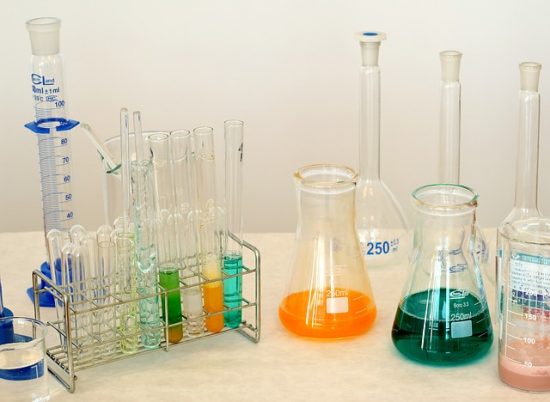Chemical Management
Chemical management encompasses the lifecycle of the chemical from acquisition, storage, use and disposal to ensure the safety of faculty, staff, students and visitors. The areas under chemical management include:
Chemical Hygiene Plan
To minimize exposure to hazardous chemicals in laboratories, the Georgia Southern University Chemical Hygiene Plan (CHP) provides detailed guidelines on procedures, equipment and best practices that will reduce faculty, staff and student risk from hazardous chemicals in the workplace and laboratories. Departments are to use this plan to create their own department specific CHP.

Acquisition of High Hazard Chemicals/Materials
The acquisition of high Hazard Chemicals/Materials is the main point of introducing hazards to Georgia Southern University’s campuses. High hazardous chemicals/materials can present risk to personnel using them or increase the risk where they are being stored. Often times, they are costly to remove during disposal. The acquisition of high hazard chemicals/materials review program is an effort to ensure that all high hazard chemicals/materials acquired and used for the purpose of research are conducted in compliance with federal and state regulations. Products that will require EHS review before purchase include Department of Transportation Explosives, Department of Homeland Security Chemicals of Interest, Drug Enforcement Agency (DEA) Controlled Substance and Regulated Precursor Chemicals, NIOSH List of Chemotherapeutics and Antineoplastics, OSHA’s list of carcinogens, EPA Banned Pesticides, CDC Select Agents and chemicals, chemicals with an LD50 of less than 50mg/kg and NFPA Hazard rating of 3 or 4.
Faculty/PI/Lab Coordinators will be required to complete an Application to Use a High Hazard Chemical or Product. EHS will review the form to determine if any controls (engineering, administrative, personal protective equipment) or equipment that may be needed to support research with such chemical or material.
If you have any questions, please contact the Occupational Safety Manager.
Chemical Storage and Handling
Hazardous chemicals should be separated and stored according to their hazard category and compatibility.
All laboratory activity should consider the chemical compatibility before beginning research. The Safety Data Sheet is a resource to obtain information about the chemical in your possession.
The chemical compatibility chart can be used as a reference guide to determine which chemical may or may not be stored or mixed together.
Transporting, Transferring and Shipping of Hazardous Chemicals
To ensure the safety of the public and university faculty, staff and students, the shipment and transportation of hazardous materials are regulated by the Department of Transportation (DOT) under 49 CFR 172.011.
The DOT, the Federal Aviation Administration (FAA), the International Civil Aviation Organization (ICAO) and the International Air Transport Association (IATA) requires that you are trained and certified before shipping or receiving hazardous materials via ground or air even if someone else handles your shipment.
The hazardous materials include hazardous chemicals, infectious substances, radioactive materials, compressed gases, dry ice, liquid nitrogen, lithium batteries etc.
EHS will provide guidance to faculty, staff and students who want to ship or transport hazardous materials in accordance with the applicable regulations. If you have any questions, please contact the Occupational Safety Manager.
Transportation on or between campus buildings
Employees and student transporting hazardous materials on campus are not placing the materials “in commerce.” Hence, are exempt from the DOT Hazardous Material Regulations (49 CFR 171.1(d)(5)) if the transporting of the materials is between campus buildings. However, individuals transporting these hazardous chemicals on campus must follow all EHS requirements:
- The employee/student must receive training and be familiar with the hazards before transporting the material.
- A transportation plan that considers possible emergencies should be developed and spill kit must be available in case of an accident or spill.
- A lab pack or secondary containment should be used where there is a potential for a spill.
- Only university vehicles may be used for the transportation of hazardous materials.
- For hazardous waste transportation, only EHS staff and its approved contractors are authorized for such transportation. Submit a work order or contact the Environmental and Sustainability Manager.
If you need assistance with the proper packaging and labeling of chemicals before transport, contact Environmental Health and Safety at 912-478-7161
Last updated: 8/9/2021
